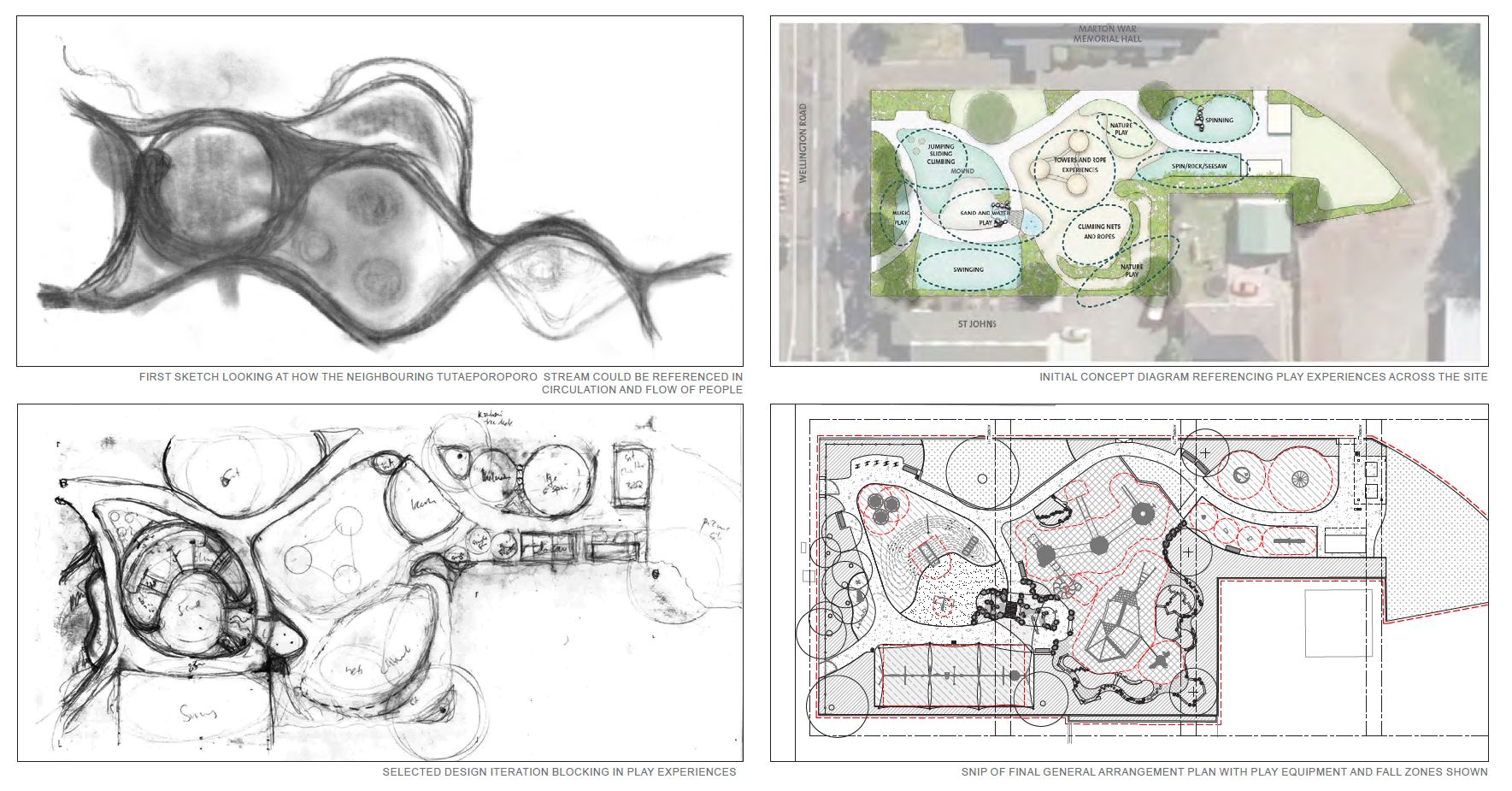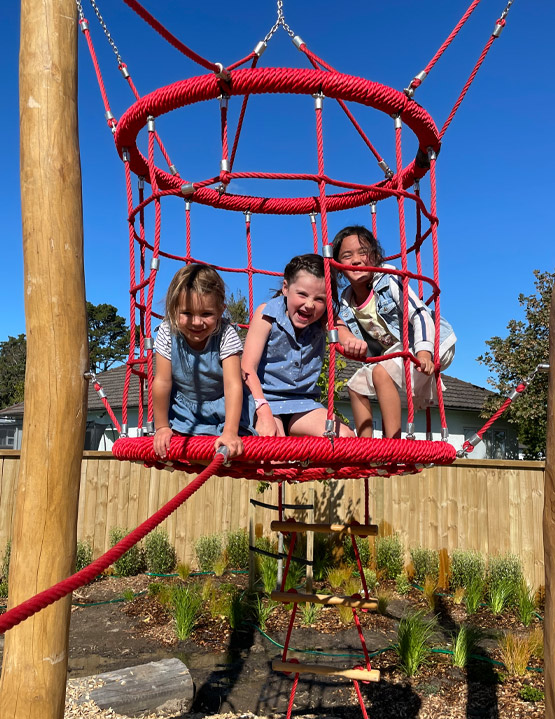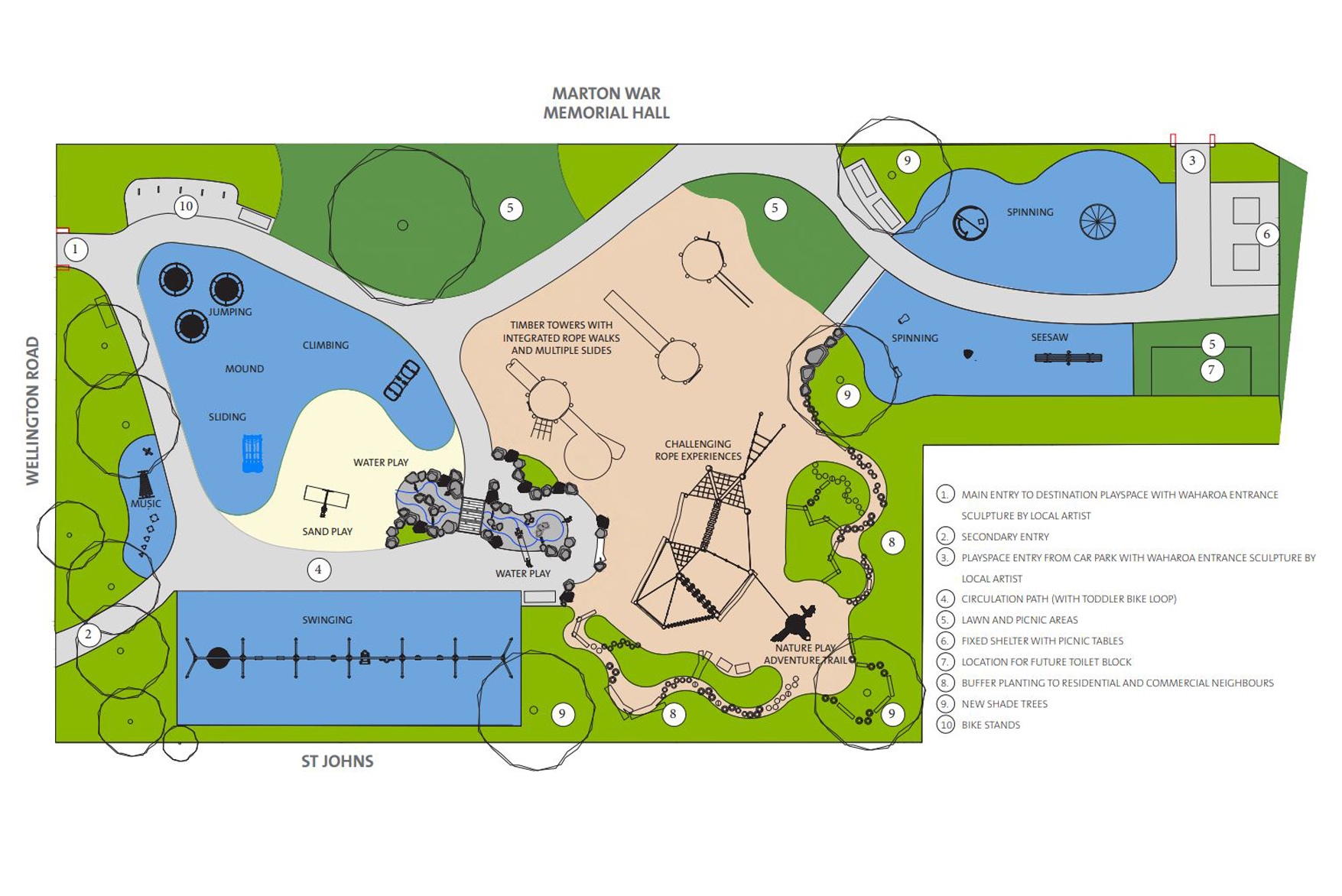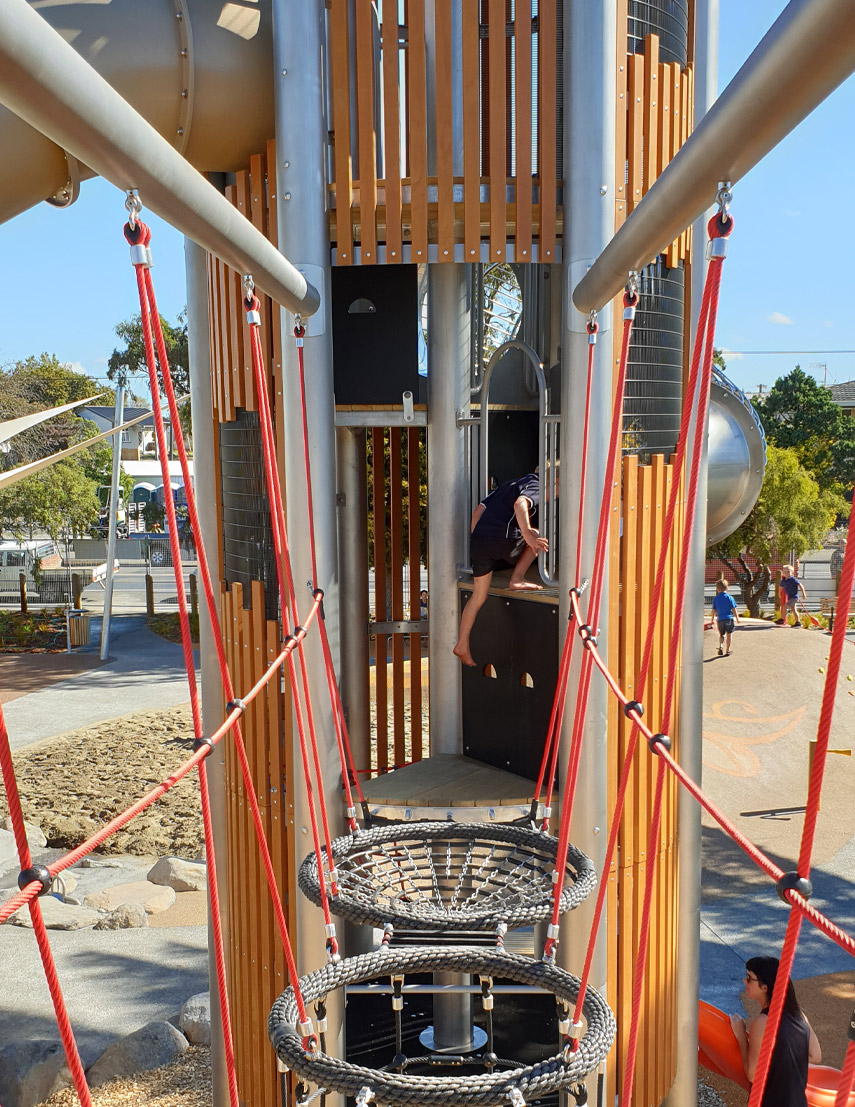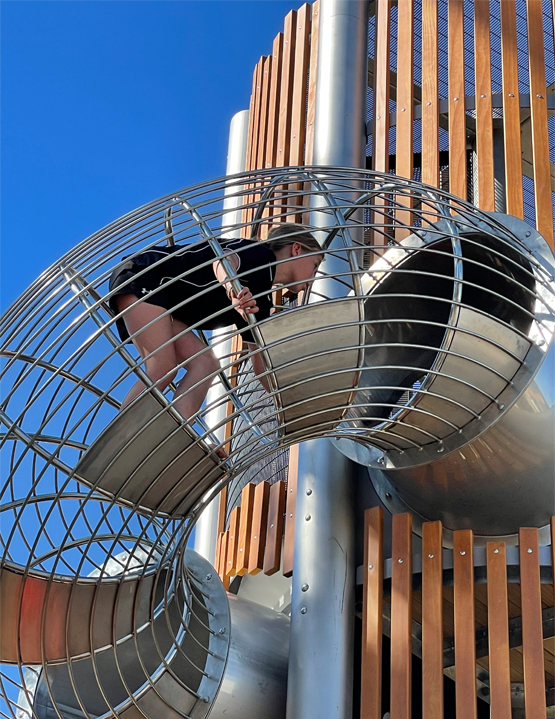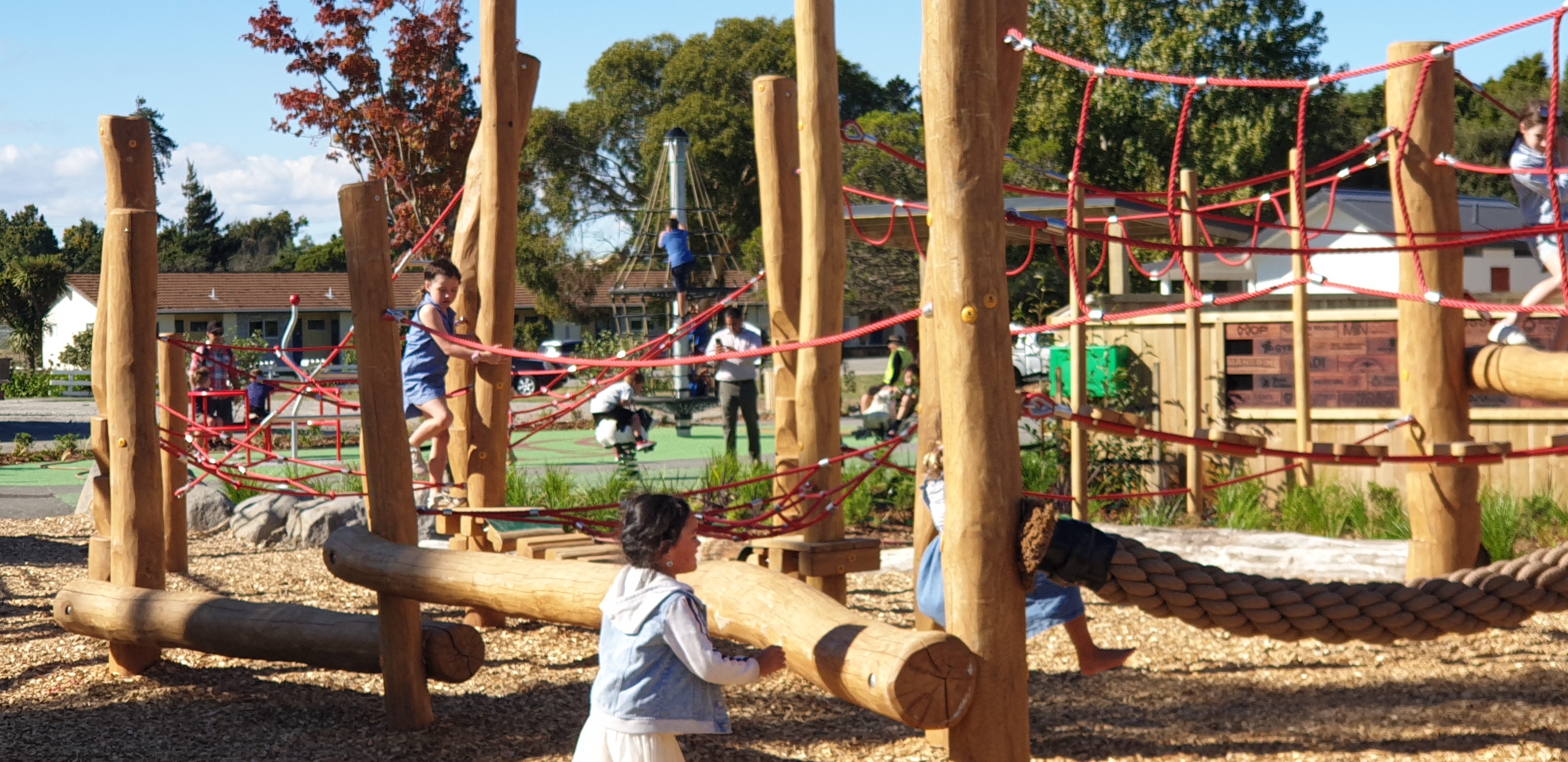Collaboration between Te Rūnanga o Ngā Wairiki Ngāti Apa artists and Boffa Miskell to embed the pūrakau / local narrative of Tutaeporoporo Te Taniwha into the playground required innovative design thinking. An initial large-scale design was broken down into a series of repeated motifs that reflected different elements of the narrative in different portions of the site.
More challenging was taking 2D designs and wrapping them around 3D topography in the playground, which was a first to trial with this surfacing. A combination of plywood forms and flexible piping was used to lay out the design and achieve the flowing curves of the original artwork.
Boffa Miskell had developed a bespoke tower and activity trail with for award-winning Anderson Park, so relished the opportunity to push the design further and create something ‘wow’ with a trio of timber towers.
Playground auditors came on board early in the concept design phase to help keep cognizance of compliance standards and regulations as we developed the rope ‘Bird Nest walk’ that would ultimately link the two larger towers.
An extra-long bank of swings was designed to draw attention away from the timber fence. With six double bays, this is the longest and most diverse set of swings in New Zealand.
With the constraints of COVID-19-induced freight havoc, lots of ‘can we build this here’ solutions were found. The rocking animals, so beloved by toddlers, are usually imported from Germany. Sheep and cow rockers have instead been carved and painted by Whanganui locals to represent familiar animals from the local farming area.
A key tenet was ‘Keep it Local’. MDG wanted the economic and social benefits of the project staying in the community. We worked with local suppliers and contractors; local artists and craftspeople; and used local materials to bring the playground to life.
